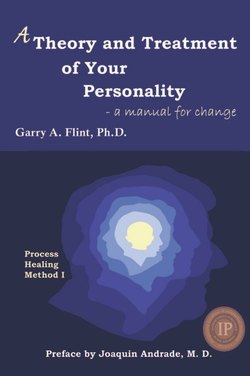Читать книгу A Theory and Treatment of Your Personality - Garry Flint - Страница 13
На сайте Литреса книга снята с продажи.
Lingering early trauma
ОглавлениеA patient complained of mood swings, which resembled something like manic-depressive behavior. I considered novel ways to explain the cause of manic-depression or at least the mood swings experienced by this patient and others. What if some prebirth and preverbal neural activity was switching in and out, causing the rapid mood changes? Could it be that some form of trauma occurred during the prebirth and preverbal periods before the brain structures and functions developed fully? I hypothesized that a specific trauma occurred and that this trauma associated with the neural activity of memories of the entire brain. This led to guessing the possibility of lingering trauma picked up in utero.
I speculated that the first trauma that a fetus would experience would be the emotional response caused by the limitation of movement. The limit of physical activity causes a memory of the emotional response, or at least a neural response associated with hurt. During this frustration, the brain is working without well-defined neural patterns. Under these conditions, a trauma would associate with all the neural activity of the entire brain. Later, specific areas of the brain would increase their activity and assume muscle control, midbrain activities, and other functions. Later still, those specific areas that actively serve particular functions can erase the early trauma memories. Finally, after active pathways of brain functions and muscle movements had fully developed, the early trauma memory would only remain in the relatively inactive neural areas of the brain. A great portion of the brain may not have constant repetitive neural activity, and this is where the traumatic memory of the early constriction trauma lingers. I call it lingering prebirth trauma.
I tested this theory with an intervention I carried out with many patients, a treatment I discovered by working with the subconscious of my patients. To treat this supposed condition of lingering trauma, I used a treatment intervention developed to treat trauma pain associated with eye position and the shifts between brain-hemisphere activities during trauma. The intervention involved the Callahan 9-Gamut Procedure (Callahan, 1985) in the following way.
Direct the patient to tap steadily on a point on the back of the hand, a half-inch behind both of the large knuckles of the ring and little finger. While tapping, direct the patient to look straight ahead, close her eyes, look down to the right, look down to the left, whirl her eyes in a circle in one direction, then whirl them in the other direction. Then direct the patient to hum a tune, count from one to five, and then hum a tune again. The subconscious said that this procedure would work to treat these hypothesized traumas lingering in quiet areas of the brain.
The following case had a prebirth trauma so I tried treating lingering trauma. I tapped on the 9-Gamut spot on the back of both hands of the patient and had the patient do the 9-Gamut treatment. The patient said that after doing three 9-Gamut treatments, she was dizzy. After three more 9-Gamut treatments, she had pain in her side and stomach. After four more treatments, she had anger and pain. After four more, the subconscious signaled the completion of the intervention. Then she had pain in her head. I followed the directions of the subconscious. After two more 9-Gamut Procedures, this pain was gone. The treatment was obviously having some effect on neural activity and produced some behavioral effects. She reported that the procedure weakened self-limiting beliefs involving guilt.
I used this procedure of repeated 9-Gamut treatments with a child. He experienced dizziness, sleepiness and then dizziness that he described as “like emptiness in my whole head with something swirling around.” Then he felt more dizziness. Then he felt clearer and I assumed that we had completed the intervention. In the following session with this young fellow, the subconscious led me to develop another procedure, working on the entire brain. This time, the patient repeated the following intervention suggested by the subconscious: Tap eight times on his forehead and eight times on the back of his head. In the following replications of this intervention, the patient felt progressively more tired and dizzy. Then he had a headache, and then he felt a little “drunk.” The subconscious told me to treat this last feeling with the eye movement procedure (EMDR). A week later, this patient said that he was doing better at school, that he felt it was easier to concentrate, and that he was becoming more independent in his play.
